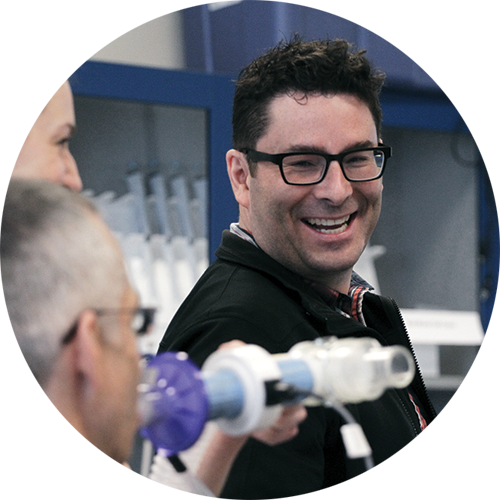Reaching new heights
Spring 2014 issue

Inspiring faculty member nominated for National Geographic Adventurer of the Year 2013
Raphael Slawinski literally reached new heights last summer when he and his climbing partner became the first to summit K6 West in Pakistan.
The associate professor in the Faculty of Science and Technology who has taught at Mount Royal for the past decade, and his climbing partner, Ian Welsted, made history in July 2013. They became the first team to ascend the north side of K6 West, a challenging and treacherous peak in Pakistan.
The two men completed the 7,000-metre climb without the use of high-altitude porters or fixed camps. K6 West is a complex piece of terrain, known for its dangerous slopes as well as intimidating icefall and avalanche conditions. The summit has been attempted and abandoned by many of the world’s most accomplished climbers.
Slawinski and Welsted’s tremendous achievement earned them a win for the Piolet d’Or award 2014, which represents recognition by some of the most respected names in alpinism, as well as a nomination for National Geographic’s Adventurer of the Year 2014, people’s choice vote. Those recognized are honoured for their remarkable achievements in exploration, adventure sports, conservation and humanitarianism. Other nominees for the National Geographic award include the likes of long-distance swimmer Diana Nyad, big-wave surfer Greg Long, and a handful of others.
Climbing is a passion for Slawinski. He believes that it is more than just a sport.
“Once you have committed to a big climb you have exposed yourself to considerable risk. You can’t just step off the court,” he explains. “All of the elements combine to create a place where I feel alive like nowhere else. It’s the intangible reward that mountain climbers keep chasing and very few experiences come close.”
The 46-year-old was born in Poland and immigrated to Western Canada as teenager. He credits his parents, climbers themselves, for igniting his passion for the summit. Hiking and camping were always incorporated into family activities in the Slawinski family.
From small crags in the Midwest, to ice climbing around Lake Superior, Slawinski has scaled the world-renowned Stanley Headwall in the Canadian Rockies as well as peaks in Alaska and Asia.
His imagination was first captured by K6 West during a trip to Pakistan in 2005, where he and another climbing partner spent time trekking in the Charkusa Valley.
Slawinski and Welstead arrived in Pakistan in 2013, ready to take on the mountain. While mentally and physically prepared to tackle the defiant terrain, the two men couldn’t have predicted the one factor that nearly derailed their plans. Soon after arriving in Islamabad, Slawinski and Welsted heard reports that the Taliban had massacred 10 foreign climbers, as well as their cook at another base camp near the foot of Nanga Parbat. Shaken by the news, yet confident that their objective lay within a safe zone, Slawinski and Welsted continued on with their expedition.
Slawinski credits much of their success to proper planning and a bit of good luck.
For the first month, their objectives were trying to stay healthy in a foreign country and acclimatizing to the high altitude. Through training and preparation, some of these risks can be mitigated, but alpinists are always at the mercy of the weather.
“One of a climber’s greatest fears is to be trapped up high in bad weather,” says Slawinski, adding that the team had the help of a friend in the Pakistan meteorological department who supplied them with up-to-date weather information.
Six days of rock and ice climbing had Slawinski and Welsted pushing past their limits both mentally and physically, returning to base camp on July 30, victorious, and ready to celebrate with a single malt.
Slawinski is committed to returning to Pakistan and may also include some ascents in South America over the next few years. But for the near future he will be fulfilling a promise to his wife and staying close to home and climbing his beloved Rocky Mountains.



